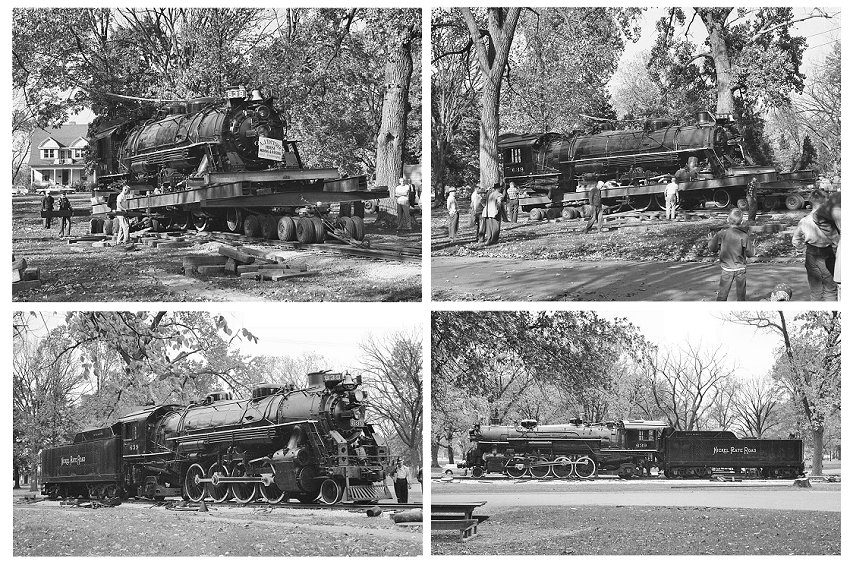
Text and photo images
©2013 Richard Leonard.

The Nickel Plate Road (its proper name was the New York, Chicago & St. Louis) was one of the last North American railroads to use steam extensively in freight service. In 1949 the Nickel Plate took 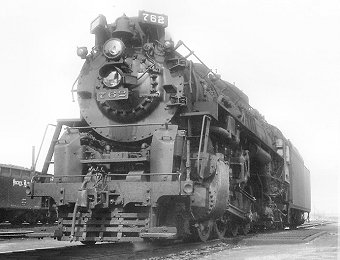 delivery of the last steam engines built for domestic use by the Lima Locomotive Works, 2-8-4s Nos. 770-779 in class S-3. Lima had also built most of NKP's existing fleet of these super-power locomotives, and until mid-1958 these famous locomotives were still handling high-speed traffic on the Chicago-to-Buffalo line. Berkshire No. 746 handled the last revenue mainline steam on July 2, 1958.
delivery of the last steam engines built for domestic use by the Lima Locomotive Works, 2-8-4s Nos. 770-779 in class S-3. Lima had also built most of NKP's existing fleet of these super-power locomotives, and until mid-1958 these famous locomotives were still handling high-speed traffic on the Chicago-to-Buffalo line. Berkshire No. 746 handled the last revenue mainline steam on July 2, 1958.
On April 3, 1958 my father, my brother, and I paid a visit to the engine terminal at NKP's Calumet Yard in Chicago, where we saw and photographed these engines just a few months before complete dieselization took them out of service. A cooperative roundhouse hostler even treated my brother to a cab ride, in the days before such impromptu events had fallen victim to railroad management's sensitivity to legal liability. We took both color transparencies and black-and-white shots that day, recording on film at least five examples of these outstanding class S locomotives. Because it was midday we didn't get very good photo lighting in most cases. But, five decades later, these scenes are too important to omit from our Archive.
At right, Berkshire 762 of class S-2 poses on the roundhouse lead, ready to back out to its eastbound train. Class S-2 left the Lima erecting floor in 1944. All locomotives seen on this page belong to this subclass. No. 762 appears repeatedly in the Herron video-DVD Steam and Diesel on the Nickel Plate Road, Volume 1, along with other locomotives shown here.
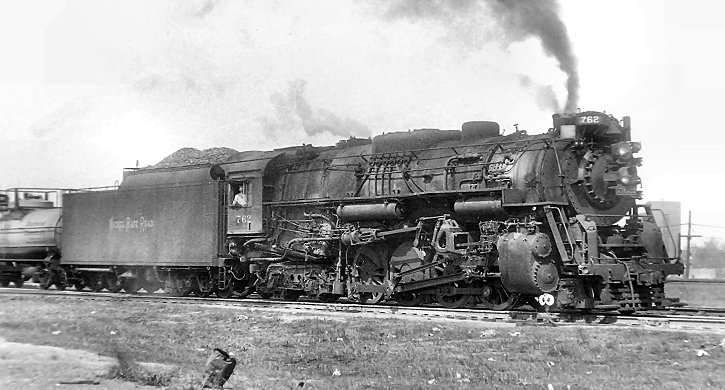
Above we see Berkshire 762 coupling onto her train in the yard. In the color scene below she gets her train under way with a plume of smoke. The Nickel Plate's Berkshires in class S through S-3 had 25x34-inch cylinders, 69-inch drivers, a boiler pressure of 245 pounds per square inch, and 90.3 square feet of grate area. They had 4772 square feet of evaporative heating surface and 1992 square feet of superheating surface. These locomotives produced 64,100 pounds of tractive effort, and generated a calculated 4500 horsepower. This was enough to propel a 4000-ton train at 70 miles per hour, and in actual practice this tonnage was often exceeded.
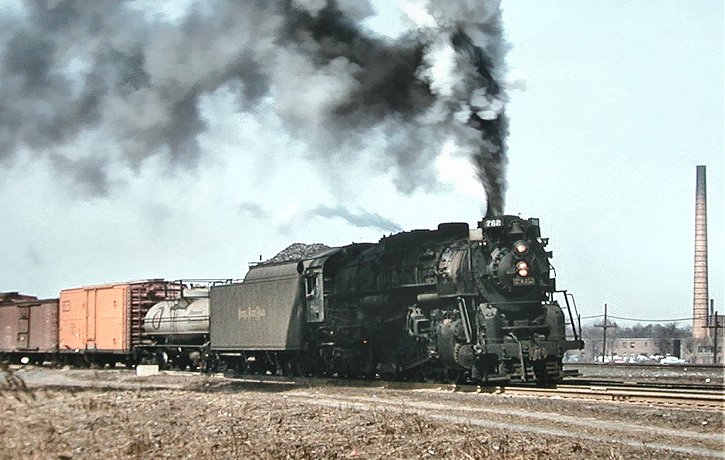
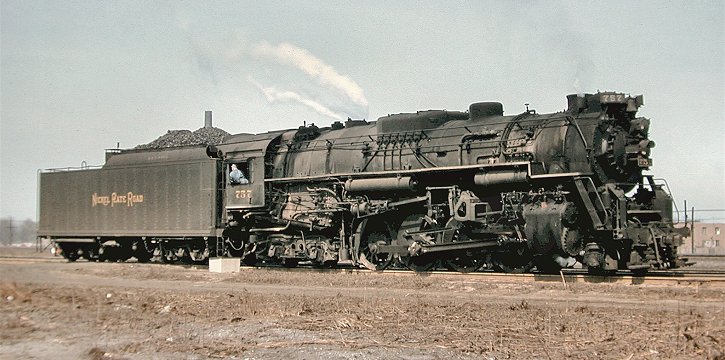
Above we see No. 757 preparing to couple to her eastbound freight. Long displayed at the Railroad Museum of Pennsylvania, the locomotive has been acquired by the Mad River & NKP Railroad Museum at Bellevue, Ohio for cosmetic restoration. The Nickel Plate 2-8-4s were a high-speed freight locomotive with which the railroad successfully competed with parallel lines of the much larger New York Central between Buffalo, Chicago and St. Louis. In anticipation of the mass-production technology that would characterize the diesel era, several other railroads purchased 2-8-4s of almost identical dimensions in the years before and after World War II — the Wheeling & Lake Erie; the Pere Marquette; the Richmond, Fredericksburg & Potomac; the Virginian; and above all the Chesapeake & Ohio which called them Kanawhas after the West Virginia river. Differing slightly in specifications and cosmetic details, these locomotives were all based on the design for the Nickel Plate's original order delivered by the American Locomotive Company in 1934. Although it was Lima rather, than ALCo, that constructed the majority of these Berkshires, the initial order was given to ALCo as low bidder on a government-financed purchase through the Depression-era Public Works Administration. (Thanks to Peter K. Shepherd, Publications Director for the Nickel Plate Road Historical & Technical Society, for that information.)
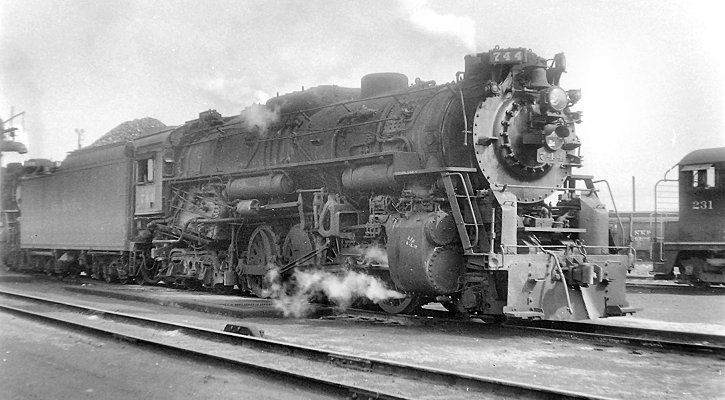
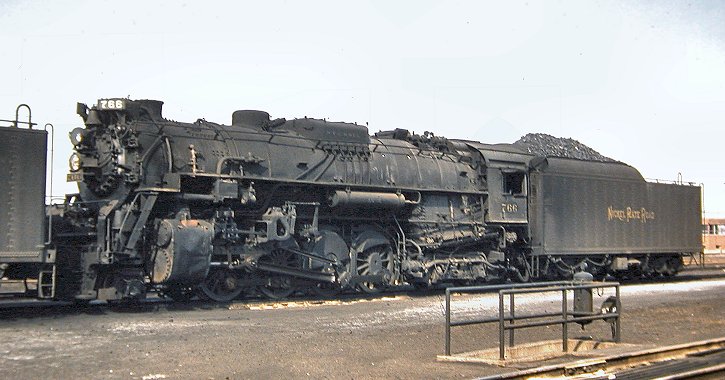
Above, S-2 Berkshires 744 and 766 rest on the ready track awaiting their joint assignment. Frequently these Nickel Plate Berkshires were double-headed, perhaps more to position a locomotive at another terminal than because the train required more power. In the photo below by my brother, David Leonard, we see Nos. 744 and 766 departing Calumet Yard with an eastbound freight; the following transparency with the going-away shot is mine. Because the first railroads to own locomotives of this design were controlled by the Van Sweringen brothers, and the design came from their Advisory Mechanical Committee, they are often called the "Van Sweringen" or "AMC" Berkshires.
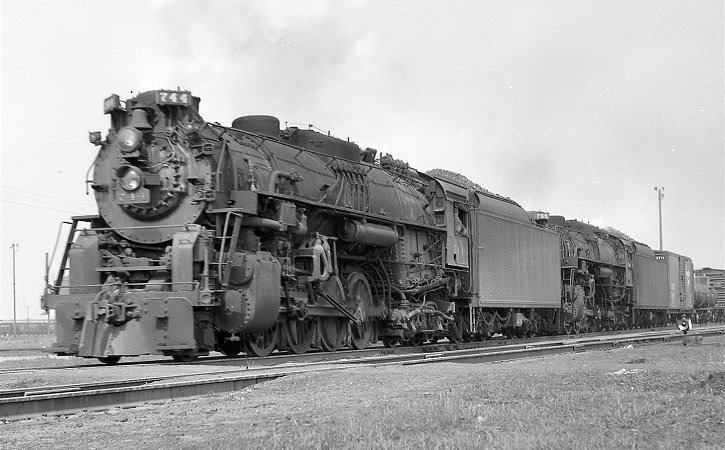
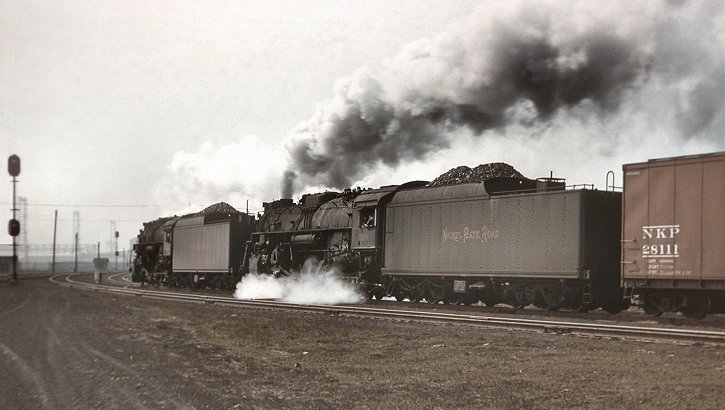
Twenty-four engines of this standard Berkshire design survive, and several have been operational since the end of their use in revenue service. Nickel Plate No. 759 is at Steamtown, with a volunteer group planning to restore it to operating condition. Pere Marquette No. 1225 is owned and operated by Michigan's Steam Railroading Institute. C&O No. 2716, modified to simulate a Southern Railway locomotive (the Southern never owned Berkshires), also enjoyed a career at the head of many railfan trips.
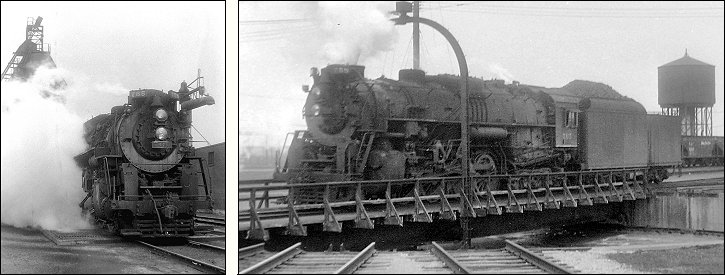
Most famous of all the Nickel Plate's Berkshires is probably No. 765, now owned by the Fort Wayne Railroad Historical Society. During our 1958 visit to Calumet Yard, No. 765 posed in the terminal amidst a cloud of steam (above, left), and we also captured her on the turntable (above, right). My brother got a better shot of her before she rolled onto the turntable (below).
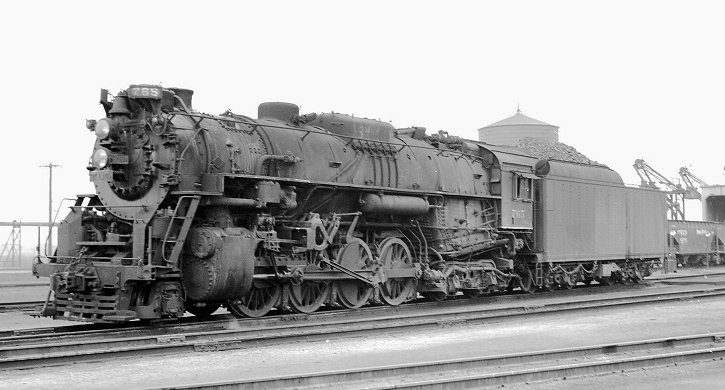
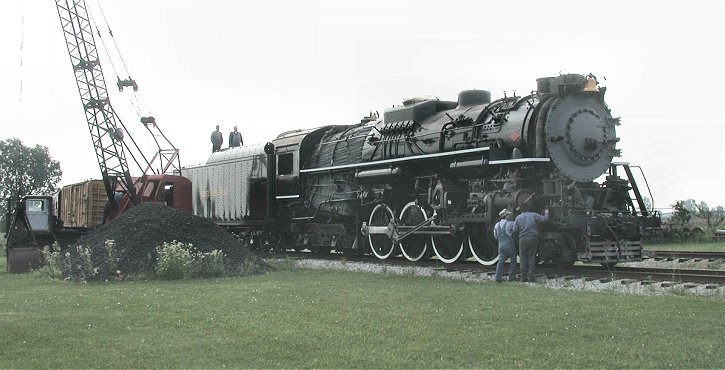
After being restored to operation in 1979, No. 765 was in excursion service until 1993 when her flue time expired. Thanks to the diligent work of members of the Fort Wayne Railroad Historical Society her operational career has again been renewed. On a trip through Fort Wayne on July 24, 2005 I photographed her as the crew was loading coal into her tender to fire her up for her first boiler test. A 2010 shopping at the Fort Wayne facility included installation of roller bearings on the tender trucks, plus valve work. Andrew Enyart, one of No. 765's engineers, kindly gave members of my family a tour of the shop on June 21, 2010 and took this photo of me (at left) with my daughter Charity Silkebakken, her husband Richard and my grandchildren Miriam and Mark.
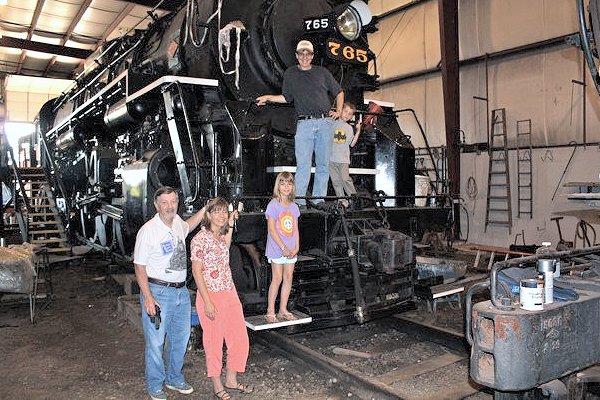
In September, 1959 the Nickel Plate Road donated No. 639, a class H-6e 2-8-2 erected by Lima Locomotive Works in 1923, to the city of Bloomington, Illinois, where it was placed on display in Miller Park in October, 1959. My late brother, David V. Leonard, photographed the move and installation of the locomotive in these scenes below. His fourth photograph was published in Trains magazine.
